Next Stop, Rest Stop!
Being a Tour of the State's Finest Rest Stops
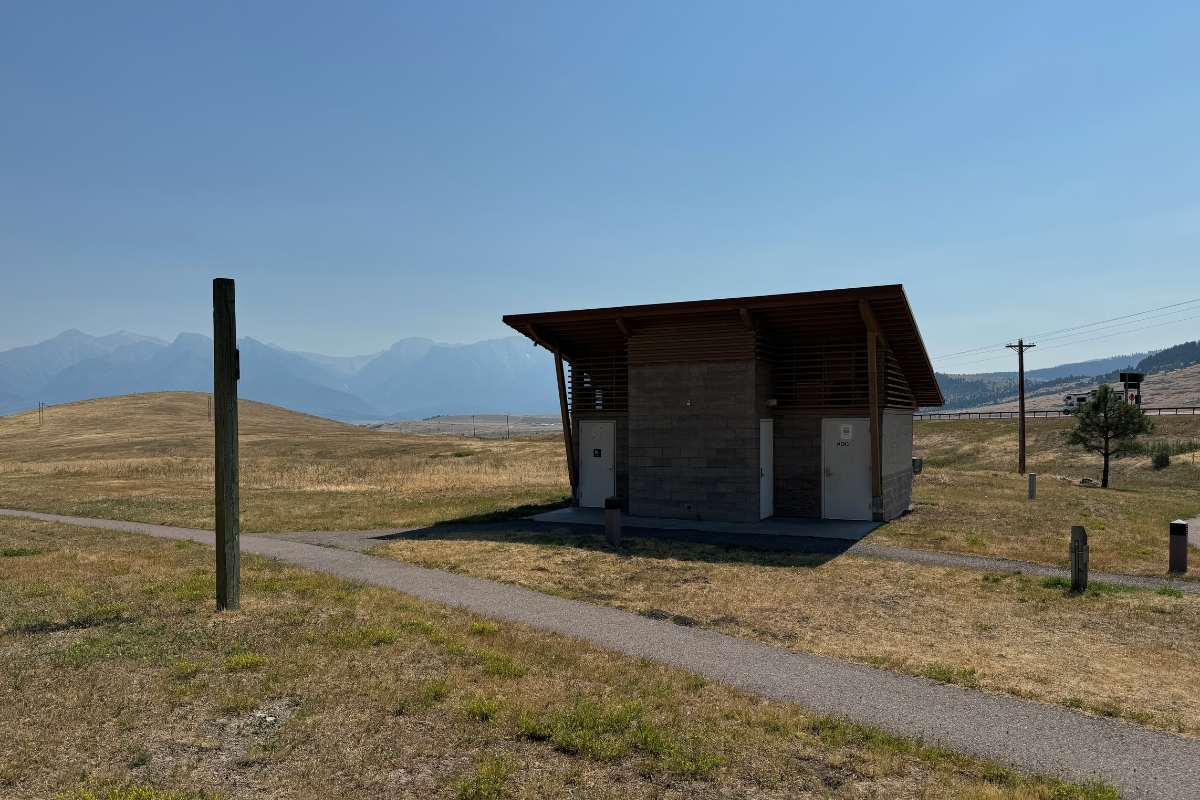
What could be better than driving along one of Montana’s scenic highways, marveling at the spectacular mountains and cliffs, meandering through the dense pine forests, or following a road along one of Montana’s waterways, maybe even driving along the Missouri River on the same route used by Lewis and Clark? Thousands of miles of waterways lace the landscape across Montana, and any road trip will probably take you by some of them. From the massive flow of the Mighty Mo to the gurgling, clear trout streams like the Blackfoot River to the quiet, serpentine belts of water that slip through the farmlands on both sides of the Divide, watersheds are everywhere. All that water. Flowing. Rushing. It can really evoke some urges in a traveler.
And then you see it, flashing by on the roadside like a shining savior, a royal blue answer to your highway prayers: Rest Area 2 Miles.
They’re the unsung heroes of Montana road travel, these 63 benefactors of bladder and bowel. And as any road warrior knows, they’re much more than just a place to, um, lighten your load. A rest area is a welcome opportunity to get off the road for a bit to stretch your legs, give your pet a potty break, change your baby’s diaper, do some deep dives on your cell phone (Montana’s spotty service notwithstanding), unfold and scrutinize your highway map, refill your water bottles, enjoy a picnic lunch, hook up your RV for a dump, and yes, visit the bathroom. At many of these facilities you can also bone up on some history by checking out the interpretive markers that share the fascinating, sometimes surprising stories from the surrounding area.
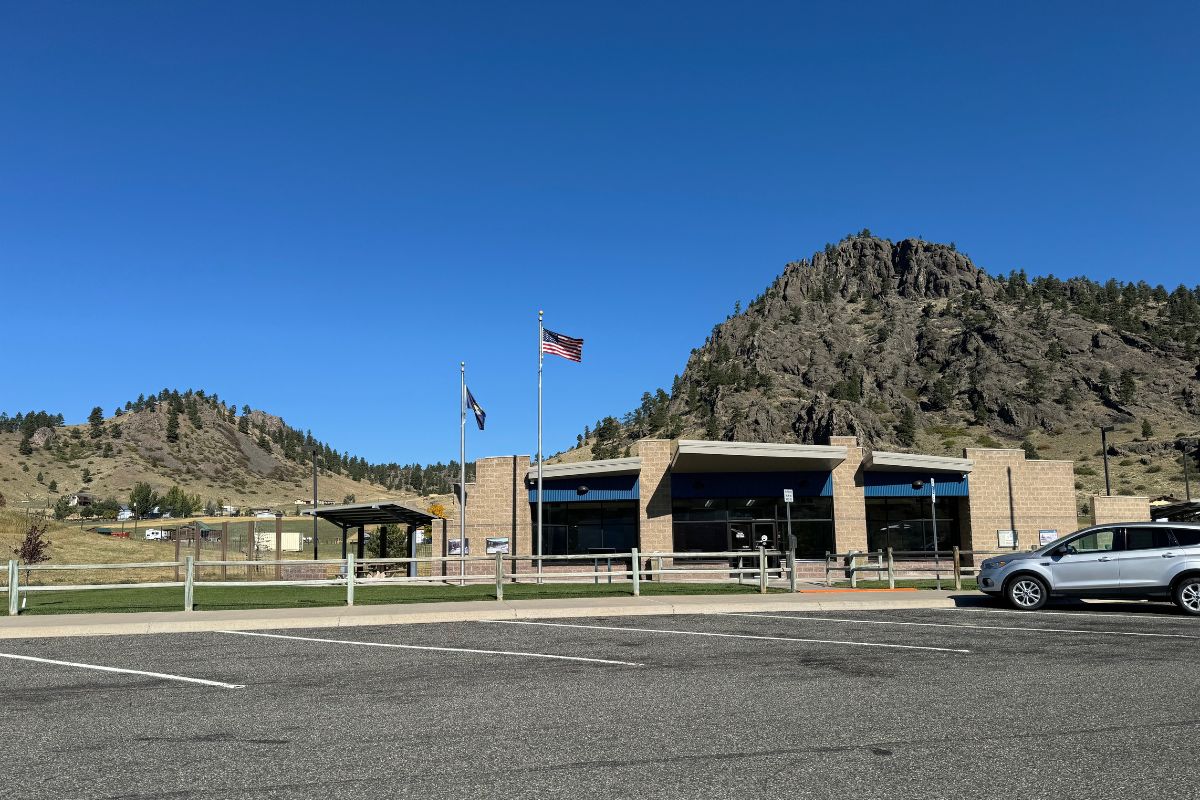
If it seems that highway rest areas have always been there, you’re pretty much right. Montana’s rest areas have been around almost as long as paved roads. When the federal government pumped about 10 million dollars into Montana’s highway program in the early 1930s, the state’s Dept. of Transportation started building rudimentary roadside picnic areas to serve the burgeoning automobile culture. By the time the Interstate Highway System began construction in 1956, the State Highway Commission had drawn up standardized plans for rest area sites and the amenities they offered travelers. In 2009 the MDT kicked off an ambitious new rest area plan with dedicated funding, and the plan is periodically updated, most recently in 2014. Most are open year-round, but it’s a good idea to check ahead to avoid any panic and possibly a ruined seat cover. https://www.montanarestareas.com/
The newest updated rest areas can be found in every corner of the state. These sleek, modern buildings are so well-appointed they’re only about one chili dog short of a truck stop. The Hysham rest area on I-94 just east of the I-90 junction near mile marker 64, for example, features all the latest amenities a traveler could expect from a state-of-the-art rest area. The sleek new building houses three women’s rooms, three men’s rooms and two family rooms, all with running water and baby changing stations. The roomy, ADA accessible vestibule entry opens into a clean interior with lots of natural light, gleaming concrete floors, lacquered wooden benches and a water fountain complete with water bottle fill station. It’s a comfortable space to ride out a storm, or just give your eyeballs a break from white line fever. Outside you’ll have your choice of six covered picnic tables, and your canine friends will appreciate the fenced-in pet area, complete with bright red fire hydrant for those dogs slow to catch on (I’m looking at you, labradoodles). There’s also an informational panel that tells the story of Jedediah Smith, the famous trapper who explored central Montana 200 years ago, blazing trails that may include the path of this very stretch of highway.
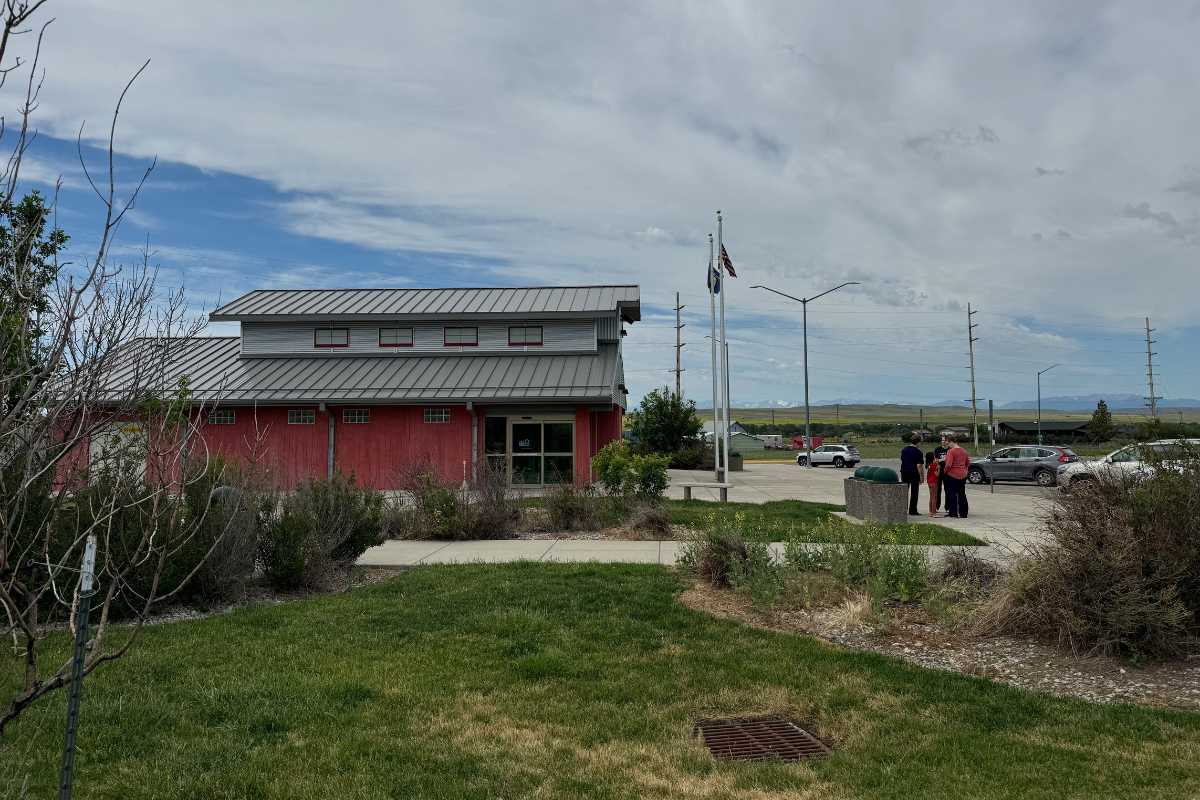
While the big, fully loaded rest areas are impressive and welcome, some of the most modest facilities can take your breath away simply by their location. Just southwest of Ismay on US Route 12, between Baker and Miles City, there’s a tiny jewel of a rest stop. It sits on four acres of mowed lawn, a landscaped oasis on a rise in the bucolic rolling hills of the eastern prairie. It may be one of the handful of rest areas that have been adopted by a local who provides the upkeep. The facilities are minimal, just a pair of vault toilet restrooms, but they are immaculate. The men’s room looks like it was built yesterday, and the polished aggregate floor looks clean enough to accommodate the five-second rule. Okay, maybe I wouldn’t do that, but if I dropped my car keys I wouldn’t be afraid to pick them up. The parking lot is generous enough for this spot that sees few visitors, and the large expanse of grass with its row of apple trees is a great place to throw out a blanket and have a picnic while you enjoy this peaceful little corner of eastern Montana.
Once you start paying attention to the surroundings, you’ll see that the MDT was deliberate in choosing sites for their rest areas (the ginormous logo on the front of some buildings attests to that pride). To further enhance their pulchritude, most rest areas feature plenty of trees and shrubbery, offering a handy opportunity to brush up on your botany knowledge. I’m ignorant enough in that regard that I classify most trees as “wooden,” so having a helpful app like Picture This on your phone is a necessity.
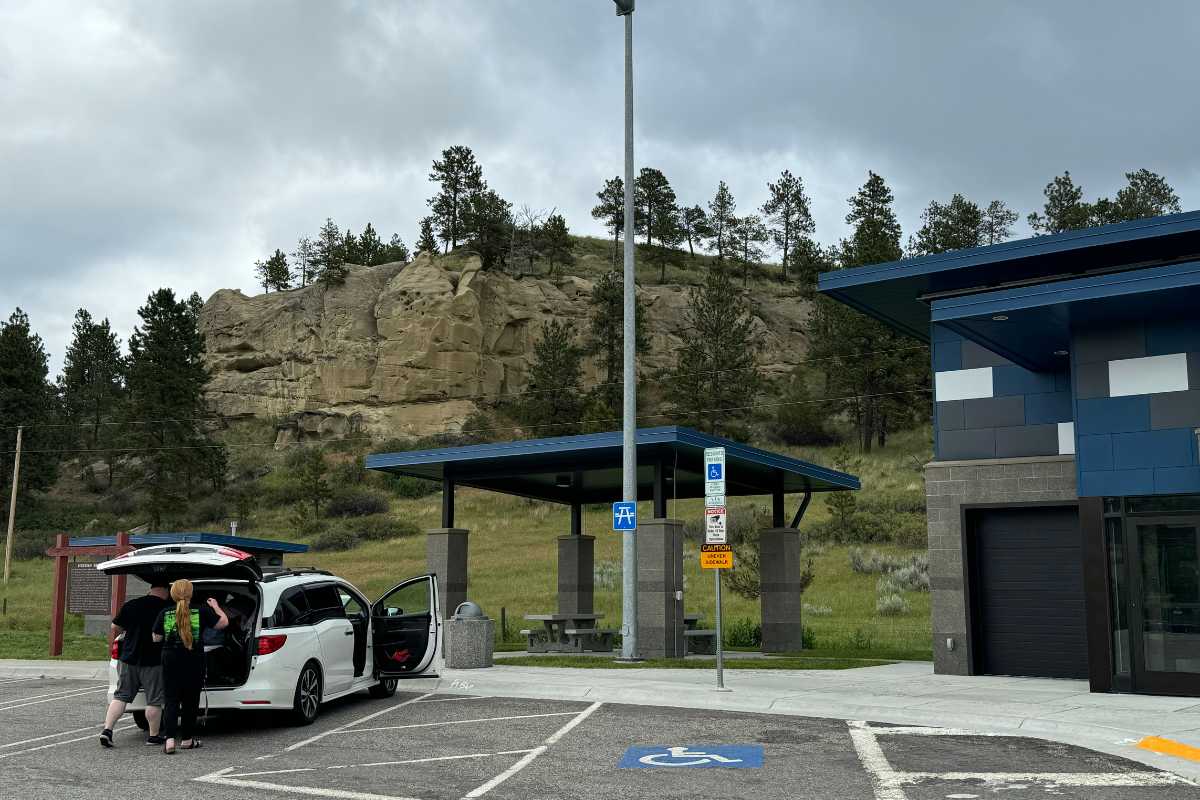
Speaking of trees, I recently drove up to northwest Montana to visit an old friend in Troy. Along the way, I stopped at Ross Creek Cedars Scenic Area, about 30 miles south of town. It’s not a rest stop, per se, but does have two vault toilets and two picnic tables. It’s an excellent way to spend half a day, moseying through a flabbergasting forest of monster cedars.
From Troy, I decided to make the run north to Yaak to lay eyes on the infamous Dirty Shame Saloon. It was closed, which was a…well, you get it. To add insult to injury, there are zero rest stops on that 40-mile road. That makes it, in my book, 40 miles of bad road. Shout out to Duane Eddy.
One mile east of Troy, where Hwy 56 T-bones US Route 2, you’ll find one of Montana’s newest rest areas. It’s worth a stop even if you don’t have to go. There’s plenty of parking for trucks, RVs and trailer pull-throughs. It’s open year-round, but it’s an especially cool stop in the summer thanks to the shade provided by fruit trees scattered throughout the site. The restrooms are large enough to feature stalls and changing stations. It’s a great spot to have lunch at one of the picnic tables among the bunches of chokecherry trees, and gain some cedar facts from the informational kiosks.
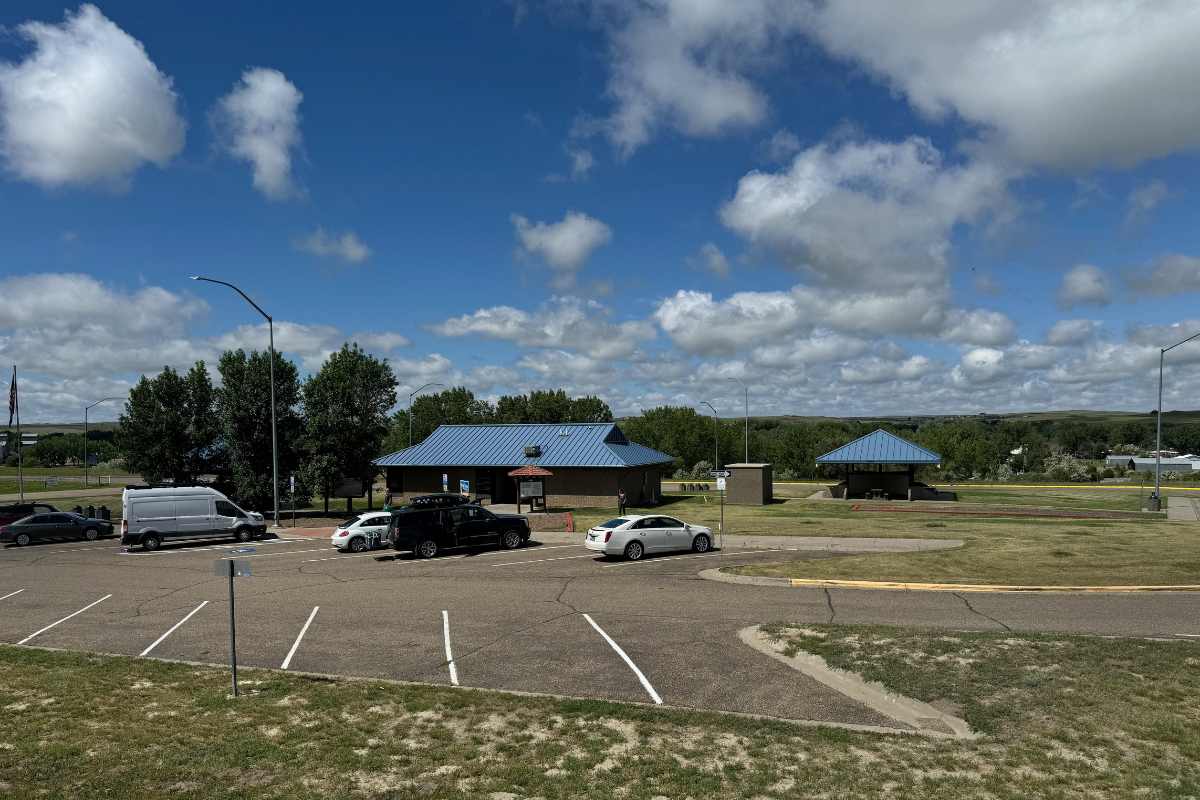
These enlightening sign panels found at so many rest areas recently began including some significant indigenous history from the region. On US Route 93 north of Arlee, for instance, there’s a small rest area on either side of the highway at the top of the hill just northwest of the Hwy 93/200 junction at Ravali. A series of informational panels features a map of the Mission Valley area dotted with significant tribal spots and their original Salish names. Another panel is filled with archival tribal photos of the Qlispé and Sélis (Kalispell or Pend d’Oreille, and Salish) people, along with some stories and history from their thousands of years of existence in the area. With the tribal-owned Bison Range as a backdrop and the towering Mission range to the east, it can be a powerful experience to take a little pit stop and get a sense of place here.
Smack-dab in the middle of Montana, near the tiny ranching burg of Mosby on State Route 200, you’ll find the only MDT-designated memorial pit stop. The James E. McKenna Memorial Rest Area features a big, two-story building surrounded by river rock and concrete. It’s very gray, sober and no-nonsense. McKenna was a Lewistown judge who served as the Fergus County Attorney and the Lewistown County Attorney, and was part of the Montana legislature in the mid-fifties. Probably also gray, sober and no-nonsense.

You want to learn about Pierre Wibaux? Do I have a rest area for you. Just this side of the North Dakota border on I-94 sits one of the best rest areas I’ve seen in Montana. It has all the bells and whistles like truck parking, lots of clean restrooms, picnic and pet areas, even wi-fi. Best of all is the visitors center with free maps and a staffer who’s eager to share their knowledge of the area and its history. One thing you’ll learn about 19th century cattle baron Pierre Wibaux is that he named a lot of features in the area after himself, including the town, a church, his home, and the county. Although he died in 1913, his name lives on at the Wibaux Rest Area.
Get to know Montana’s rest areas. They’re as integral to any road trip as Corn Nuts and Google Maps, and they’re designed to provide comfort for the weary traveler. I always urge people to take their time when they’re crisscrossing the state, and when you pull off the highway to visit a rest area and answer the call of nature, you’ll have the chance to slow down and admire the scenery, sit down for an al fresco meal, and even learn a little bit about the people, places and history that make Montana worth exploring.
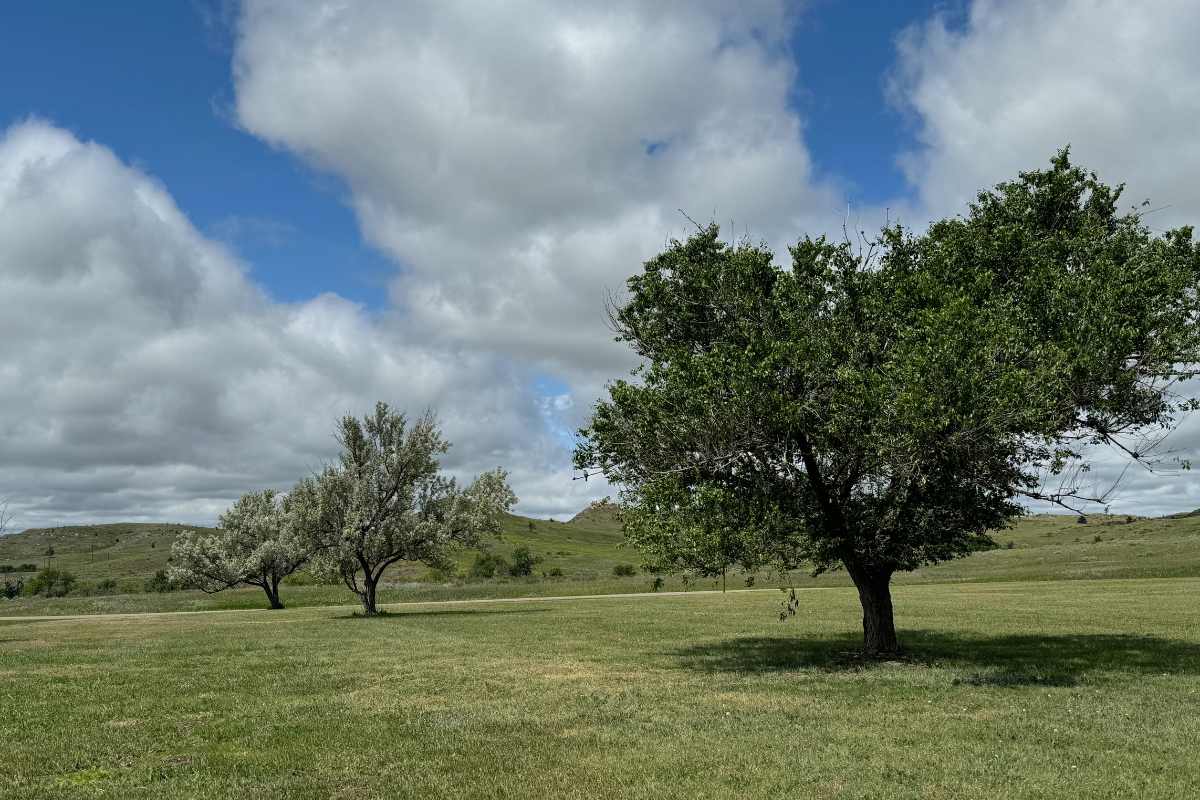

When you enter the larger rest area buildings, you’ll notice one thing right off the bat: great acoustics. Musicians like me can imagine the deep resonant tone of an acoustic guitar and a plaintive vocal ringing off the walls. A few of us even act on it.
I’ve recorded a collection of videos where I do just that, as other travelers occasionally wander in and out, bemused by the wailing and strumming going on in a place where they’d least expect it. Check them out here.

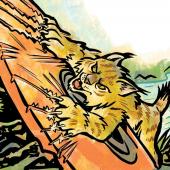




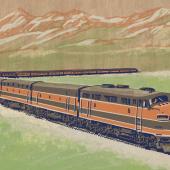
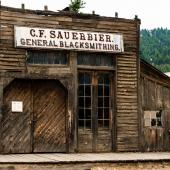




Leave a Comment Here